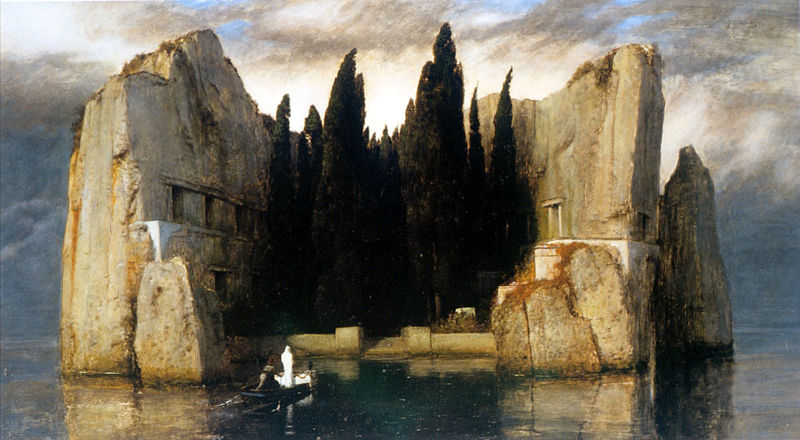Strindberg, Ghost Sonata

A. Böcklin, Isle of the Dead
(Toteninsel), 3rd version, 1883, Kunstmuseum Basel (?)
Do
Now: Who are you? Explain the
secrets and data that one would need to write an obituary on your
character.
The Student, Arkenholz
Old Man, Jacob Hummel, a Company Director
The Milk Maid, a Vision
The Dead Man, a Consul
The Dark Lady, the daughter of the Dead man and the Caretaker’s Wife
The Colonel
The Mummy, the Colonel’s Wife
The Young Lady, his daughter, but actually the Old Man’s Daughter
Johansson, Hummel’s servant
Bengtsson, the Colonel’s manservant
The Fiancée, Hummel’s former fiancée. A white-haired old
lady
The Cook
Meanwhile, I will play Beehthoven's
Piano Sonata that Strindberg is inspired by L. v.
Beethoven, No. 17
(Op. 31, n. 2) (Robinson 308).
Sonata: n.
A composition for one or more solo instruments, one of which is usually
a keyboard instrument, usually consisting of three or four independent
movements varying in key, mood, and tempo.
From The American Heritage Dictionary of the
English Language. Fourth Ed. (Houghton Mifflin, 2006)
Another musical reference is Wagner's Valkyrie, which the Student
sees with the Colonel and his/Hummel's daughter. In the Valkyrie, Siegmund visits an
unfamiliar house and meets his lover (and sister!), Sieglinde (Act I);
dies in battle (II); and crosses over to Valhalla, where heroes spend
the afterlife (Act III).
However, the significance of the Valkyrie is probably that it
represents the mythical paradise that the Student expects to find in
the Colonel's house, but doesn't (see p. 285: "Where are faith and
honor?").
W. C. Nielsen, "Strindberg, Ghost
Sonata."
<http://chss.montclair.edu/~nielsenw/strind_gsonata.html>
March 2008.